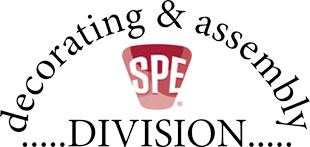SPE Decorating & Assembly Programming at ANTEC

Related Information
- What: ANTEC 2014
- When: April 28-30
- Where: Rio All-Suites Hotel & Casino, Las Vegas, NV
- Registration: www.antec.ws
SPE’s Decorating & Assembly Division will host a half-day of programming at ANTEC 2014, which will take place April 28-30 at the Rio All-Suites Hotel & Casino in Las Vegas, NV. ANTEC 2014 is the world’s largest plastics technical conference, and hundreds of original, peer-reviewed papers on all aspects of plastics technology and business will be presented.
The SPE Decorating & Assembly Division papers will be presented on the morning of Monday, April 28. A tentative programming schedule for the sessions, entitled "Advanced Processes and Materials for Decoration and Assembly of Plastics," is as follows:
Surface Modification of Polymeric Surfaces using Reactive Gas Technology
Prakash Iyer, Inhance Technologies LLC
Traditional methods to activate surfaces include corona and plasma treatment, which have some drawbacks. This presentation describes a technology for modifying polymeric substrates that has proven effective for improving the performance of existing products and for facilitating activation of "difficult-to-modify" materials, such as PP and PE. The treatment involves using Inhance Technologies’ proprietary reactive gas atmosphere technology to create permanent high surface energy. The treatment can be carried out on three-dimensional and two-dimensional structures. The treatment gives tenacious adhesion and allows use of a broad array of continuous phase systems including epoxies, polyester, polyurethane, concrete, water-based coatings and others. The surface modification chemistry can be very rapid – often a few seconds – which enables processing to be done continuously and online.
The Effect of Openair® Atmospheric Plasma on the Adhesion of UV-Curable Coatings to Plastics
Andy Stecher, Plasmatreat North America
Ultraviolet (UV)-cured liquid and powder coatings provide plastic part manufacturers with a number of desirable benefits, including enhanced appearance, improved performance and various process advantages. At the same time, the rapid film formation and densely cross-linked chemistry that characterize UV-curable materials also increases the likelihood of adhesion failures. That these coatings are formulated with little or no solvents makes attaining adhesion even more challenging. This paper examines adhesion problems inherent in UV-curable liquid and powder coatings and explores the tradeoffs associated with popular methods to mitigate adhesion problems. Atmospheric plasma treatment provides an especially effective means of improving adhesion of UV-cure coatings to a wide range of plastic substrates.
Effects of Surface Treatment on Hard-to-Bond Plastics
Anne Forcum, Henkel
Difficult-to-bond plastics, such as polyolefins and fluoropolymers, commonly are used in various industries because of the cost of the materials and their inherent chemical and thermal resistance. It can be challenging for manufacturers to find solutions to join these difficult-to-bond materials together. This paper will provide background information on difficult-to-bond materials, review techniques for quantifying the surface energy of a plastic, review the latest solutions for surface modification and introduce innovative adhesive solutions to meet the challenges of bonding these specific substrates.
Structural Bonding Alternatives for Plastics
Rachel Nashett, Henkel
Plastics have become an integral part of everyday life. It would be difficult to identify a manufacturing process that does not use plastics in one form or another. Even products that appear to be composed exclusively of metals are usually coated, sealed or adhesively joined using polymeric materials to improve the performance, appearance and longevity of metal products. Plastics have achieved widespread acceptance due to the virtually limitless combinations of plastic types, fillers and additives that can be compounded at relatively low costs and processed by a wide variety of methods. When designing assemblies made from or including plastics, it often is critical to structurally hold assemblies together with a reliable mechanism. Plastics can be reliably fastened to a wide variety of substrates using an engineered adhesive solution.
Functional and Design Opportunities Using Physical Vapor Deposition and UV-Curable Coatings
Jason Eich, Red Spot Paint and Varnish
Interest in alternatives to electroplated chrome is expanding dramatically. Color and appearance affects are limited with traditional chrome electroplating and successful "paint-on-chrome" applications are expensive and highly proprietary. Collectively the automotive, home appliance and cosmetic markets are actively searching for alternatives with the appearance and durability of electroplating, but without the environmental side effects, limitations in appearance and functional design and costs associated with this decades old process. "Chrome look" processes and coatings for decorative and automotive lighting PVD applications have been used in the UV-curable coating industry for over twenty years. As development of UV-curable coatings for PVD has progressed, so has the understanding of the process and its unique capabilities and applications. This paper will address the advantages of PVD as a chrome alternative to include functional/design capabilities that are either cost-prohibitive or impossible to achieve with electroplated applications, as well as describe some of the trade-offs associated when using coatings systems as an alternative for chrome electroplating.

